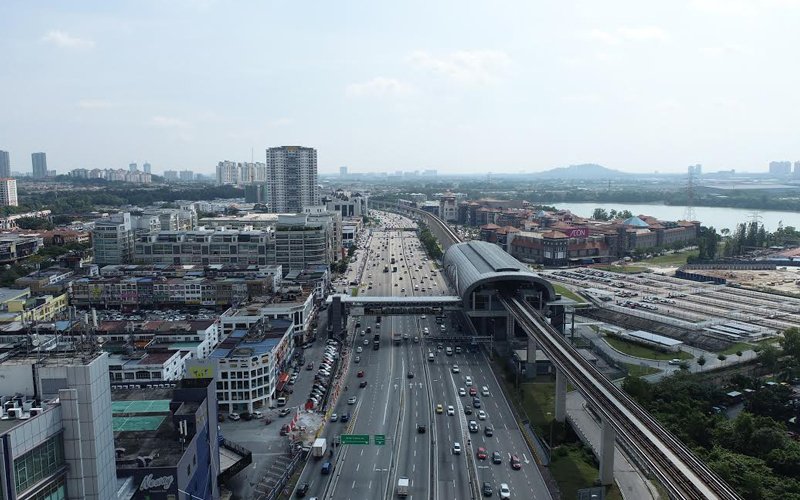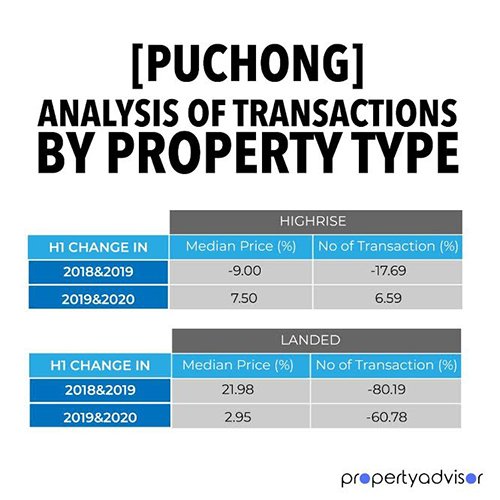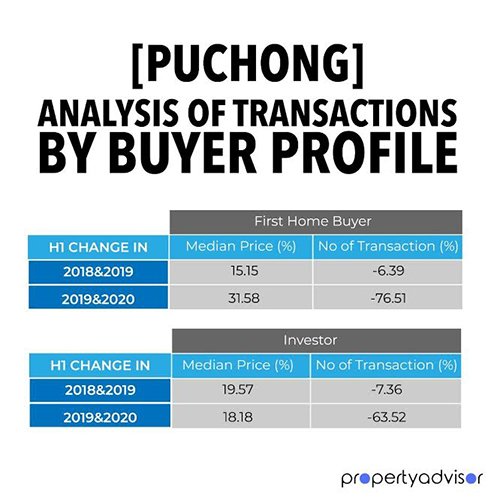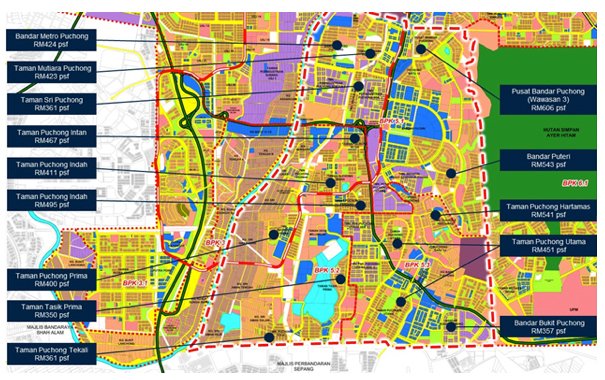Puchong: from mining town to modern township

The origins of modern Puchong can be traced back to the early 20th century, when immigrants from Sumatra and Java began to explore the area for tin mining. At the time, it was mostly plantations.
In 1948, during the Emergency, all residents were resettled in an area known as Kampung Baru Batu 14.
In the 1980s, Puchong comprised one two-lane road running through estates and villages. Development only began around 1985, when the mining licences had expired.
Since then, urbanisation has been rapid, with industrial parks, commercial centres and residential areas such as Taman Kinrara, Bandar Bukit Puchong 2 and Bandar Kinrara, springing up along Jalan Puchong.
Puchong is now a major town and a parliamentary constituency in the Petaling District, Selangor, spanning about 5,170ha.

Analysis by Property Advisor shows that high-rise properties in Puchong have remained popular, even during the pandemic.
The transaction volume for the first half of the year (1H2020) increased 6.6% compared with 1H2019. This is in contrast to the previous year, when transactions dipped 18% year-on-year in 1H2019.
The median prices for high-rise properties in Puchong saw a similar upward trend, rising 7.5% in 1H2020 after a 9% dip in 1H2019.
However, transaction volumes for landed properties have been on a downward trend since 2018.
From 1H2018 to 1H2019, transactions plummeted 80%, and from 1H2019 to 1H2020, transactions fell 61%.
But median prices for landed properties in Puchong have been going up. In 1H2019, prices rose 22%, and even in the pandemic-hit property market, prices still rose 3% in 1H2020.

Judging from the price trends on both the first-home buyer (FHB) and investor markets, Puchong is an up-and-coming area where people are willing to pay more.
Nevertheless, the transactions reveal a different story, with a downward trend.
On the FHB market, the median price spiked by an astounding 32% year-on-year in 1H2020, despite a 77% plunge in transactions.
Puchong had witnessed a similar trend in 1H2019, when median prices surged 15% compared with 1H2018 despite a 6% dip in transactions.
The investor market followed the same pattern, with median prices on the rise and transaction volume falling steadily. In 1H2019, median prices had increased 20% compared with 1H2018, and in 1H2020, prices went up by another 18%.
What does the expert say?
Puchong is a matured and well-developed region with all the amenities needed to be a self-sustaining township, says Savills Malaysia director of research and consultancy Amy Wong.
“The Local Plan reveals there are a few plots of vacant residential land still to be developed, potentially taking another 10 to 15 years for further development.
“The majority of the landed residential schemes can ensure steady capital value growth in the long run.”
Wong tells Property Advisor that over the last five years, property prices in Puchong have increased marginally.
“If you equate this with household income, that means that more affluent households have moved into the area.
“The standard of living, however, is not just equitable with property prices. It equates with the availability of public amenities such as schools, playgrounds, community spaces, parks, sports facilities and so on.”
Wong said Puchong is a relatively well-equipped locality. In terms of connectivity, it has two existing light rail transit (LRT) stations – Puchong Prima and Bandar Puteri – and Lebuhraya Damansara-Puchong (LDP) that makes it more accessible.
And there are sufficient commercial complexes in Puchong as well as retail spaces serving the daily needs of Puchong’s residents. The area also has a notable number of badminton and sports complexes for recreational activities.
“According to the Subang Jaya Draft Local Plan 2035, the allocation for open space and recreational areas is limited, having only Taman Wawasan Recreational Park as an open recreational place located along Persiaran Wawasan.
“Perhaps the existing lake, located beside Taman Tasik Prima, could be further developed and utilised to create more green areas to improve Puchong’s livability,” Wong said.

The bulk of the existing residential land use in Puchong comprises two-storey link houses. Some single-storey link houses are found in Taman Puchong Prima and Taman Puchong Indah with 2.5-storey link houses mainly located in Taman Tasik Prima.
Most of the two-storey link houses in the eastern region of Puchong (BPK 5.2) range in price from RM350 to RM500 per sq ft.
Units in the western region (BPK 5.1) are fetching higher prices, from RM450 to RM600 psf, with link houses in Wawasan 3 (Pusat Bandar Puchong), a gated and guarded development, topping the price range.
Bandar Bukit Puchong is at the bottom with the lowest average transacted price of RM357 psf.
According to Wong, the average property price in Puchong was RM584,300 in 2015, which increased to RM589,000 in 2019, and is RM675,000 for 2020, which has not yet ended.
“The volume of transactions has significantly dropped this year compared with previous years.
“Other than slowing economic conditions, the implementation of the Movement Control Order in March has stopped a variety of business activities, including due diligence for transactions to take place.”
Source: FMT News















POST YOUR COMMENTS